Do you have a question about the Philips 40PFL4707/F8 and is the answer not in the manual?
Official website for product registration and customer support.
Phone numbers for customer assistance in various countries like Mexico, Costa Rica, Colombia.
Eligibility for recall notifications and money-saving offers upon registration.
Explanation of hazard symbols like RISK OF ELECTRIC SHOCK and important warnings.
Recommendations for safe placement to prevent tip-over injuries and child access.
Essential safety instructions for operating and maintaining the apparatus.
Information on the recommended wall mount kit and warnings for self-installation.
Details on trademarks, warranty limitations, and display pixel behavior.
Statement regarding compliance with FCC Rules for Class B digital devices.
Information on Energy Star settings and energy consumption of the TV.
Guidelines for safe TV placement, ventilation, and connection procedures.
Safety notices regarding unit placement, ventilation, and battery handling.
Information on recycling packaging and proper disposal of used batteries.
Description of key features like DTV/Analog TV, Info Display, Autoprogram, and Child Lock.
Components included with the TV, such as User Manual, Quick Start Guide, and remote.
Key to understanding symbols used in the manual for Digital TV and Analog TV operations.
Instructions for securely attaching the TV stand, requiring two people for large screens.
Using the cable management tie to keep wires tidy and organized.
Step-by-step guide for inserting batteries into the TV remote control.
Explanation of each button's function, from Power and Source to navigation and media controls.
Description of physical buttons on the TV for volume, menu, channel selection, and power.
Identification and purpose of various input/output terminals like HDMI, PC, USB, and antenna.
Connecting antennas, RF, HDMI, and Component Video sources to the TV.
Crucial safety reminder to connect AC power only after all other connections are made.
Guided setup for language, signal source, location, and picture preferences.
Information on re-scanning channels, adding channels, and PIN code management after initial setup.
How to turn the TV on/off, enter standby, and adjust volume levels.
Methods for changing channels using remote buttons or direct number input.
Selecting different input sources for TV and connected devices.
Setting the sleep timer and freezing the current TV image.
Applying predefined picture and sound modes for different viewing scenarios.
Selecting stereo, mono, or SAP audio modes for broadcasts.
Adjusting the display format for 16:9, 4:3, and PC video signals.
Using the INFO button to access program titles, guides, and aspect ratios.
How to open the main menu and navigate through Picture, Sound, Setup, Features, and USB options.
Detailed options for fine-tuning picture quality, including color, contrast, and gamma.
Configuring sound modes, equalizer, SRS TruSurround HD, and speaker output.
Automated channel scanning and memorization process for antenna or cable.
Adding analog channels and managing the channel list by skipping or removing.
Verifying the signal strength for individual digital TV channels.
Customizing closed caption appearance, including service, font, color, and background.
Setting up and managing the PIN code for parental control features.
Blocking access to specific channels or external input sources.
Configuring locks based on US movie and TV rating systems for content control.
Setting Canadian English and French rating preferences for content blocking.
Procedures for changing the PIN code and adjusting PC display settings.
Enabling and managing EasyLink for interconnected device operation.
Displaying a list of devices connected via EasyLink.
Choosing between Home and Retail modes for optimal performance and energy settings.
Selecting the preferred language for the TV's user interface.
Option to turn the electronic sticker feature, showing device information, on or off.
Instructions for displaying JPEG image files stored on a USB memory stick.
Instructions for playing Motion JPEG video files from a USB memory stick.
Steps to check current software and download new versions from the Philips website.
Procedure for updating the TV's software using a USB memory stick.
Connecting devices via HDMI for the best picture and sound quality.
Connecting a DVI device using an HDMI-DVI cable and separate audio connection.
Connecting devices using Component Y/Pb/Pr video and Analog L/R audio cables.
Connecting the TV to external digital audio systems using a coaxial cable.
Connecting devices using Composite Y/VIDEO and Analog L/R audio cables.
Connecting a PC using HDMI, DVI, or VGA, with accompanying audio setup.
Guide to playback of JPEG photos and Motion JPEG videos from a USB device.
Answers to common problems regarding remote control, initial setup, and signal reception.
Solutions for issues like no power, unresponsive buttons, or clock settings.
Troubleshooting steps for no image, no sound, distorted visuals, or incorrect audio signals.
Solutions for problems related to captions, screen size, noise, and display coverage.
Definitions of key terms used throughout the user manual for better understanding.
Guidelines for maintaining the TV, obtaining service, and checking the remote's signal.
Details on model number, display type, aspect ratio, viewing angles, and tuner.
Information on input/output ports, power requirements, and operating temperature range.
| Screen Size | 40 inches |
|---|---|
| Resolution | 1920 x 1080 pixels |
| Display Technology | LED |
| Refresh Rate | 60 Hz |
| Smart TV | No |
| HDMI Ports | 3 |
| USB Ports | 1 |
| Audio Output | 20 W |
| Built-in Wi-Fi | No |
| Connectivity | HDMI, USB, Component, Composite |

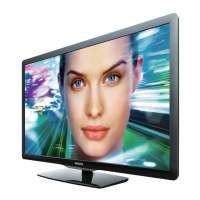

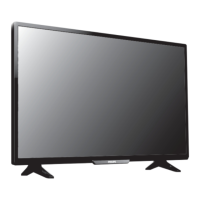
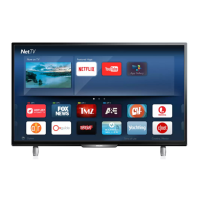

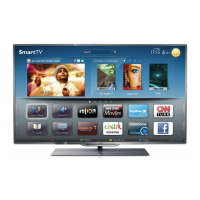
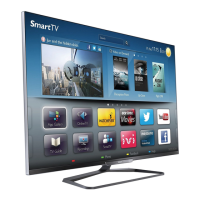




